The advancement in precision joining processes known as laser welding technology is a step change and has transformed manufacturing across all sectors. Compared to traditional processes, industrial laser welding systems provide precision, speed, and quality control which cannot be met by any other approach. With the continued development of fiber lasers, automatic control systems, and the introduction of Industry 4.0, the lar market is still on the rise…
This paper is focused on the basic principles of laser welding, selection of laser welding apparatus, methods of laser welding operation, requirements for maintenance of laser welding, and laser welding in industry, enabling laser-welded systems professionals to enhance the laser welding processes to the most efficient and optimal quality.
What is Laser Welding?
Understanding Laser Welding Fundamentals
Laser welding is a joining process that best uses the technology of laser beams to form strong and accurate metal seams. The metal beam welding system utilizes lasers to burn a small area to temperatures above 10,000°c to melt surfaces and combine them. In contrast to the classical procedure, this advanced welding laser technique forms a deep, narrow weld seam with less extensive areas of heated base metal.
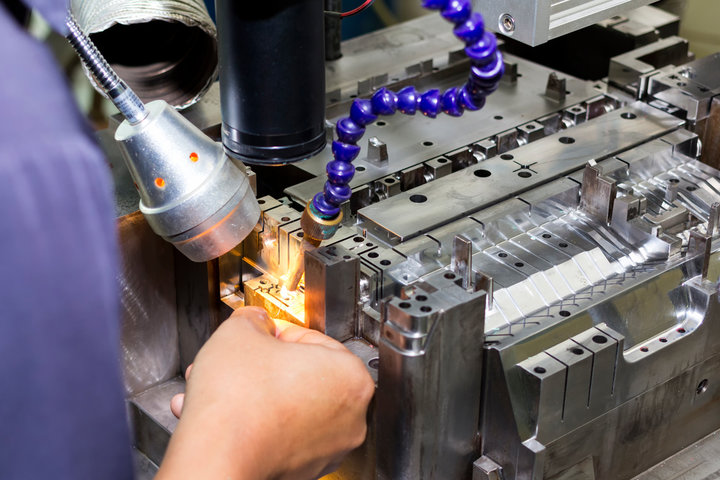
Types of Laser Welding Machine
CO2 Laser Welders
The machines for welding with carbon dioxide lasers operate in the infrared range with a wavelength of 10.6 µm which is suited for the joining of thick materials. Deep penetration applications are common place and thus these systems are more suitable for high industries. The CO2 laser welding equipment has the capability of high power while maintaining good energy absorption in metals.
Solid-state Laser Welders
Solid state laser welding systems in addition to a fiber laser welder operate at a few centimeters above the linear metric regions and workshop spaces, at wavelengths, for example, about 1.06 microns. These devices come with good characteristics of the lasing beam and are used for technological purposes where accuracy of the laser welding machines is performed better. Their small size and the ability to shape a pulse program in a given way allow you to set small values of heat input for the laser welding operations.
Components of Laser Welder
Resonator System
The resonator cavity is where the laser medium, gas or crystal, is stored. It is also the point where the laser shot begins. This is the primary unit that defines the basic properties of the laser output.
Optical Components
Lately welders incorporate powerful optical systems, e.g., lenses, mirrors, and beam delivery systems responsible for positioning and focusing the laser beam. They make it possible to control and position the laser beam.
Control and Support Systems
Such advanced laser welding machines are equipped with coolants, motorised movement, and safety covers. The feeding systems consist of either fiber optics or articulated mirror arms and the focusing optics direct the energy to the surface of the workpiece only.
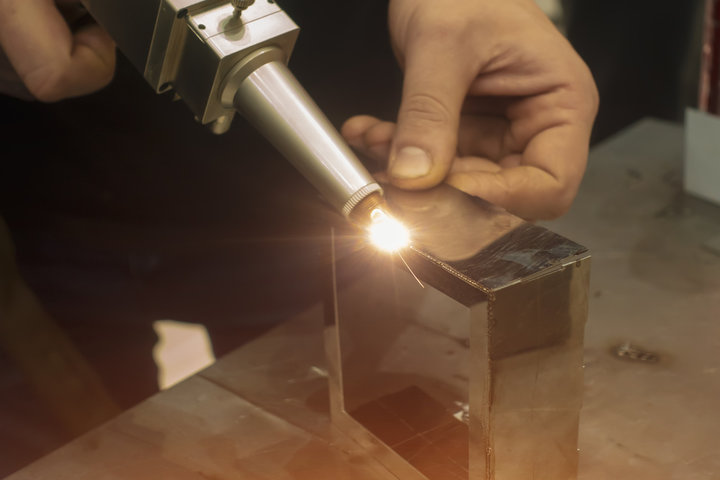
How Does Laser Welding Process Work?
Laser Beam Generation Process
The current laser welding apparatus commences the operations with the generation of a powerful laser beam inside the resonator cavity. When it comes to the laser welding machine’s working of forming the laser beam, a lasing medium which can be gas molecules in CO2 laser welder or crystal lattice structures in solid-state welding lasers is excited either by electrical energy or by light energy. A more advanced method of laser welding creates coherent light with a laser focus or a series of lasers, capable of yielding power densities as extreme as 1 MW/cm² in industrial laser welding machines. The welder laser machine converts the supplied electric energy efficiently and precisely into light energy.
Beam Focus and Control
Enhanced Laser Beam Delivery
Sophisticated laser welding apparatus includes easily adjustable mirrors and fiber optic cables that help in directing the welding laser beam. High end laser welding machines integrate water-cooling system for the optical parts to maintain stability in beam profile over long periods of work.
Systems That Enhance Laser Focusing Precision
Inside the focusing head of a laser welding machine lay some optics designed to mix and focus the laser energy in a certain spot, this spot is usually about 0.2 - 0.6 millimeters in diameter. Advanced laser welder control systems vary the focal length of the laser and the angle of the welding beam for effective penetration of the weld.
Control of Process Parameters
Weld laser beam welding laser welders parameters include power density, spot size, beam mode, etc. The contemporary laser welding the machines have built-in systems that allow the monitoring of such parameters in real time for weld quality consistency.
Weld Pool Formation
Heat Generation Technology
As the focused beam of the laser welding appliance strikes the surface of the workpiece, the material is quickly heated to the melting point. The strong concentration of energy generated through the use of an industrial laser welder produces temperatures above the point of vaporization for the material being welded.
Metal Fusion Mechanism
Deep penetration welding is possible with the keyhole welding effect, whereby the vapour pressure keeps a hole in the material. Such that, while the laser welding apparatus advances along the weld track, molten pool metal circulating around the keyhole region and freezing out the narrow weld in a strong bond.
Solidification Control Process
In laser beam welding, cooling rates and solidification patterns are controlled by both the pulse shaping and beam manipulation functions of the laser welder to ensuring optimal microstructure development in the weld zone.
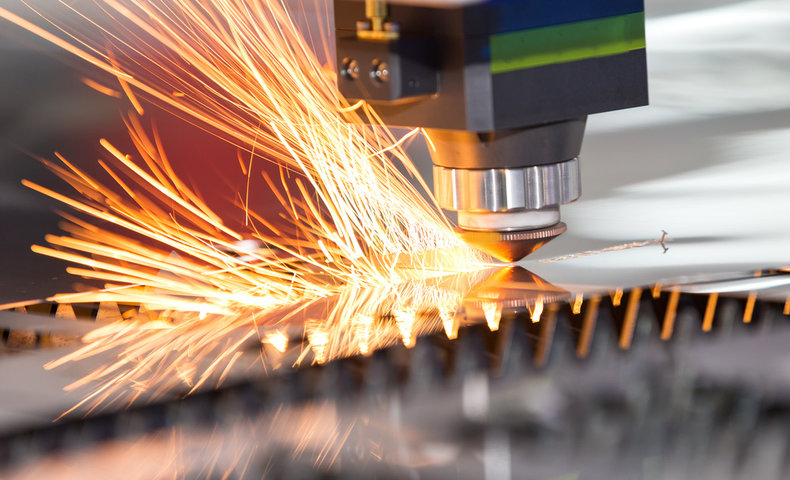
What Are Laser Welding's Advantages and Disadvantages?
Benefits in Manufacturing
Performance of High Precision
Laser welding machines can make very accurate welds since the beam spots that they operate with can be as small as 0.2mm. The high quality laser welding system concentrates energy, with little thermal effect zones allowing the weld with the parent metals not to distort. Industrial laser welders make it possible to have deep, narrow penetration welds which are not possible with the ordinary welding methods.
Production Efficiency
Modern laser welding machines allow welding speed of over 10m/min, vastly superior compared to the old processes. The control systems of the laser welder allow for the process to be done continuously with little operators attention to the machine. Current laser welding technologies consider movable multi axes enabling sophisticated welding operations.
Quality Enhancement
The laser beam welding process creates clean aesthetically great welds with little spatter. Laser welding machines put a computer at the helm of the machine and thus enable a laser welding operation of high quality on repeat. The technology of welding laser helps in managing the quantity of heat that is transferred to the work piece.
Limitations of Process
Initial Investment Considerations
High end laser welding systems are capital intensive as far as procurement of equipment is concerned. The precision laser welding equipment will also require regular servicing and even parts replacement. It is also expensive in that it takes a long time to train operators of laser welding machines.
Technical Constraints
Industrial laser welders have a limitation when it comes to highly reflective materials such as copper and aluminum. Considerable care must be taken not to contaminate the laser welding equipment and especially the beam delivery system. Some materials cannot be combined for welding using laser beam because it poses difficulties in joint design.
Operational Requirements
Professional grade laser welding equipment is laser any workpiece or workpieces, highly the accuracy of the joints is required. The operation of a laser welder involves strict safety requirement because of the use of high power lasers. High powered advanced laser welding systems are also sensitive and require a properly managed environment in order to work effectively.
Cost to Performance Analysis
Operating Expenses
Although laser welding equipment is more energy-effective than using traditional methods, it has to undergo specialized maintenance which affects the overall expenditure. The laser welded device has operating costs because of its consumable parts and the utilities consumed in the operation. The laser welder machines have to be calibrated on a regular basis for optimal functioning, however this also increases the cost of maintenance.
Production Benefits
The fast features of the mechanism for laser welding allow for tremendous savings in processing time – that is the time involved in processing each part. The use of the industrial laser welder results in lowering the amount of additional processing after welding since the laser provides precise heat control. There is also a significant decrease in labor with the automated laser welding machines as well as productivity increase.
Long-term Value
Laser beam welding comparative initial investments are high but escalation in productivity and quality makes them cost-effective. With the use of professional laser welder also minimizes the use of materials and achieves better consistency of parts manufactured. The laser welding technology complements a variety of manufacturing processes thus improves their returns.
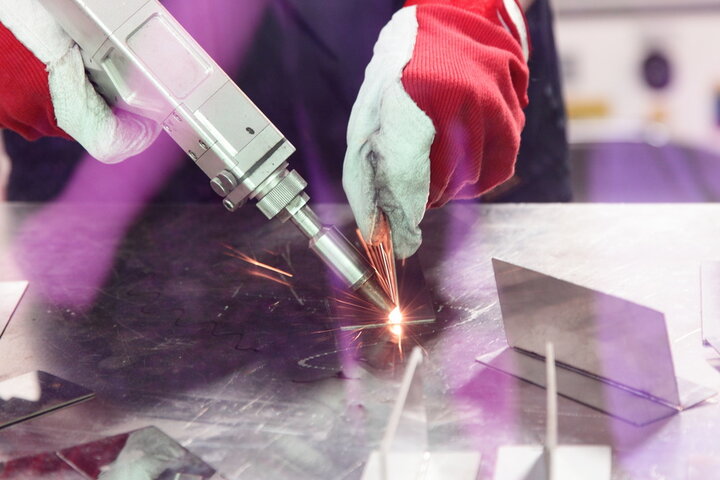
Which Industries are Most Suitable For Laser Welders?
Applications in Automotive
Manufacture of Vehicle Bodies
The advent of automotive laser welding systems has changed the traditional methods of assembling car bodies in mass production environments by allowing high speed continuous welding of body panels. State of the art laser welder machines make it possible to join elements made of galvanized steel with their aluminum counterparts precisely. The laser beam welding process eliminates distortion of visible body seam as well as structure elements.
Power Train Components
Industrial laser welders greatly facilitate the manufacturing of high precision transmission gears and engine parts meant to fit together. With aplomb the laser welding equipment keeps the heat localized so that sensitive, heat controlling parts of the drivetrain do not warp. Industrial class laser welding systems carry out high duty cycle penetrative welds feasible for powertrains.
Safety Systems
For instance, pneumatic energy control butt welding for safety airbag systems is one of the applications where laser welding devices bring about durable joints. If it is laser welding technology, then nothing short of excellence is achieved in the assembly of the brake system. Advanced laser welding systems enable automatic manufacture of seat belts system.
Solutions for Electronics
Circuit Board Assembly
With the technological advances, a precision laser welding machine is used to afix microscopic joints within an electronic circuit assembly. The erosion process of laser beam welding allows for non-contact joining of fragile electronic parts. Any best laser wave welder for over-molded applications ensures that thermal stresses are not applied to the sensitive materials.
Battery Manufacturing
Industrial laser welders make hermetic seals in casings of battery cells. The advanced laser welding equipment’s sharp focus defends against compromising the delicate materials that make the battery. Dual laser welder system makes it possible to quickly manufacture a battery pack assembly.
Consumer Electronics
Laser welding equipment makes it possible to provide beautiful welds on phone and tablet enclosures. The laser beam welding machinery allows for the assembly of very small parts within a housing. Current generation laser welders are able to reproduce quality consistent with mass production in the manufacture of electronics.
Integration with Aerospace
Aircraft Components
Aerospace systems that include laser welding machines are utilized to join lightweight alloys with a high degree of strength. The precision of the laser welding machine incorporates safety critical standards owing to the nature of the aircraft assembly. Industrial laser welding machines are capable of performing welds with complex geometry within turbine parts.
Space Technology
High-quality laser welding machines are also used in the joints assembling ceremony of satellites. The laser welding fabrication process guarantees formation of sealed connectors in interfacing parts of a spacecraft. Following the trends in modern technologies laser welding machines are used to deliver high quality performance even under harsh conditions in the area of aerospace.
Maintenance Operations
Aerospace parts can be cosmitically laser repaired using these laser welding machines. The laser welding machine technology also helps in automating the maintenance practices. It is common to find gas tungsten arc islands in laser welding machines decorated with certified quality repairs.
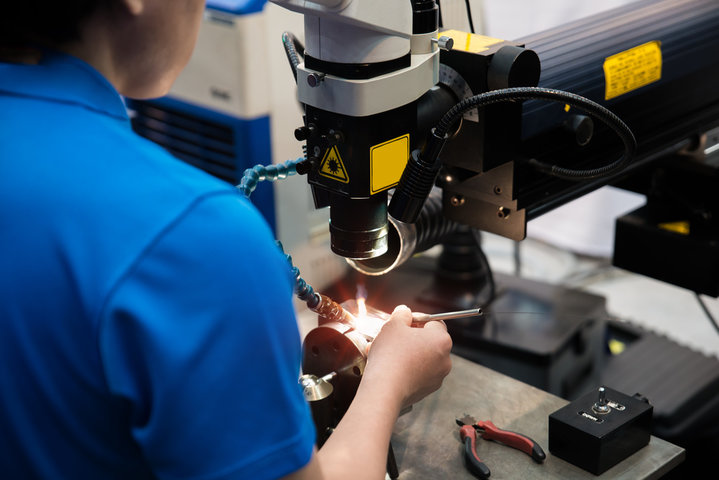
Essential Tips for Laser Welding System Maintenance
Daily Inspection Of Optical System
Undoubtedly, the quality of the beam is to a great extent determined by the regular inspection of the optical elements of the laser welding equipment. Protective windows, lenses, mirrors and other elements should be inspected for contamination, scratches, or damages of coatings. Such components should be cleaned with due regard to the specialized materials and the ways of cleaning. An unblemished optical path provides the best possible delivery of laser beams, which prevents the deterioration of the weld. The quality of laser welding also largely depends on the cleanliness of the optical system of the laser welder.
Cooling System Monitoring
It is important that the cooling system incorporated in laser welding machines be in good working order at all times, if consistency in operation is to be maintained. Coolants levels, flow rates and temperatures are to be checked on a daily basis. Other checks like inspecting for leaks, checking pressure, and evaluating coolant quality are done on a monthly basis. System contamination should be avoided through regular cleaning or changing of system filters. Cooling capabilities of laser welding equipment have a direct effect on the top stability of light and the life span of components.
Routine Calibration Of Power Supplies
Power supply usage of the laser welding machine should be under control and adjusted if necessary for the even distribution of energy. Also check the stability of the voltage every three months, the regulation of current and the modes of pulse. Each power rating should be recorded and analyzed against the previous readings. Industrial laser welding equipment requires exact power correction in order to ensure the same quality with every weld. Timely calibration of the equipment avoids the change in the welding parameters.
Maintenance of the Beam Delivery System
Check the various components of the laser beam welding delivery system, for example, the fiber optics and the articulating arms whether they are damaged or incorrectly positioned. On a monthly basis, check the characteristics of the beam as well as its focus position. Executive beam delivery components service as per manufacturer recommendations. For laser welding equipment, the beam must remain straight in order for it to function properly.
Assist Gas System Verification
Ensure the proper functioning of the laser welder's assist gas system to allow proper weld protection. Monitor gas pressure and the flow rates and the condition of the nozzle on a daily basis. Change the filters and ensure that the delivery lines are cleaned out on a regular basis. Maintain guidelines for the gas purification and their consumption rates. The assist gas system of a welding laser has an effect on the quality of the weld while at the same time protects the weld area from oxidation.
##How to Select the Most Suitable Laser Welding System
Assessing power and beam quality requirements
It is essential to define the power requirements of your laser welding machine as a function of the working material and its thickness. Effective industrial welders are found in 2kW to 20kW range, high power system allows for more depth penetration of the laser beam. The weld quality of laser welding equipment M⊃2; factor also determines the ability to focus the beam.
Opt for the Right Wavelength Technology
Utilize different devices when laser welding according to the absorption characteristics of materials. Fiber laser welders (1.06µm) are effective for metals, particularly for more difficult to work with, reflective metals such as aluminum and copper. Comparatively, CO2 laser welding systems (10.6µm) are more preferable for non-metals and man-made organic matter.
Take into Account Automation and Control Aspects
The contemporary systems for laser welding allow for all the above-mentioned automatic integration. The control interface of laser welder machine should be capable of the necessary programming. Do not forget to ask for professional laser welding equipment with the capability for the monitoring as well as quality control in the course of the process.
Analyze Total Cost of Ownership
Evaluate the complete laser welding device investment, including:
Initial equipment cost and installation
Operating expenses (energy, gases, consumables)
Maintenance requirements and service contracts
Operator training and certification needs
Facility modifications and safety requirements
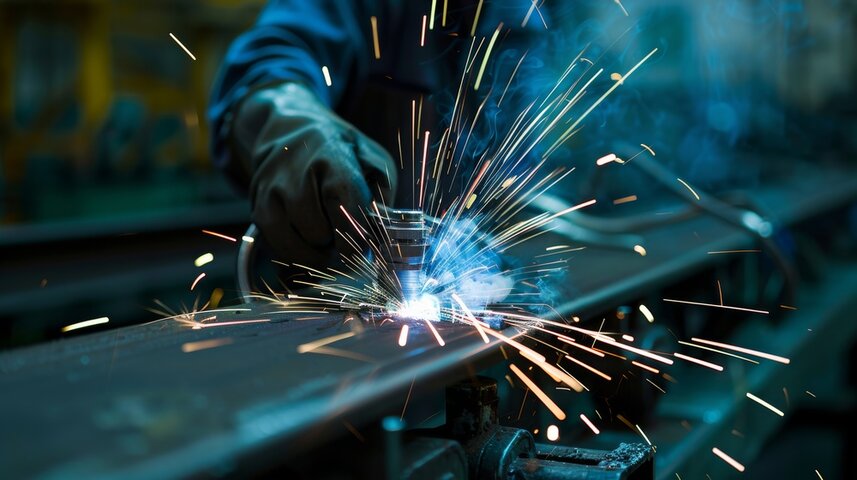
Ready to Elevate Your Laser Welding Capabilities?
TEAM MFG specializes in precision CNC machinery and professional laser welding systems. Our expert team delivers customized laser welding solutions backed by 15+ years of manufacturing excellence. Whether you need high-power industrial laser welders for continuous production or specialized laser welding machines for precise applications, we provide comprehensive support from selection to implementation.
Transform your production efficiency with TEAM MFG's advanced laser welding technology!
Frequently Asked Questions (FAQs)
Q: Can you shed more light on the differences between laser welding and welding by using arc?
A laser welder works by focusing the laser beam to generate heat at a specific point which yields narrow and deep welds that cause less distortion to the surrounding join. On the other hand, arc welding invariably provides larger areas of heat and the use of filler wire is involved.
Q: What factors should I consider when determining the appropriate laser power for my welding application?
When it comes to laser beam welding, power selection is influenced by the thickness and type of materials to be joined as well as the needed weld penetration. Thin sheets are usually below 2 mm which usually require the input power between 1 2kW range while laser welding systems for thick materials that are more than 5 mm require 4 20kW systems.
Q: What materials can be worked with a laser welding machine?
The industrial laser welding system is capable of welding most metals which include steels, aluminum, titanium and even nickel based systems. Also modern laser welders combine different metals if the right parameters are set.
Q: Why do I have variations in the quality of welds produced with my laser welding equipment?
The most frequent causes are: dirty optics, user misfocus, nonconstant assist gas flow, and depletion of consumables of the laser welding machine. If you keep your laser welder well-maintained, it should perform reliably every time.
Q: What precautions should I take when using laser welding machines?
When performing laser wielding of any type, it is mandatory to have enclosed work stations, special laser protective glasses with appropriate materials and fittings, ventilation, and trained personnel who comply with safety practices for the use of laser welders.
Q: At different intervals, how do I clean the optical parts diagrams of the laser welding equipment?
Check the optics of the laser welding machine every day for any dust and dirt. Wipe the dusty cover windows once in a week and carry out the maintenance of the entire optical system on a monthly basis. Follow the recommendations of the laser welder’s manufacturer in regards to the replacement of the components within your laser welder.
Q: What functional aspects of laser beam welding should I keep track of?
Look at the power, focal position, travel speed, assist gas flow, and the angle of the laser welding device. Most of the new laser welding systems allow these parameters to be monitored in real time.





















